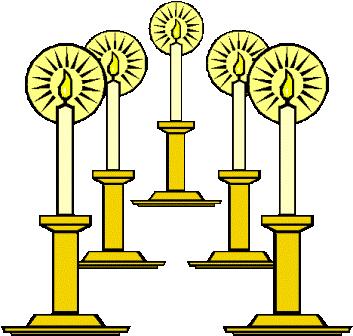

Bouquets and Flowers For Every Event...

This information is intended for parents of school-age children and teachers who are imparting Religious Education within a Catholic school environment.
The contents of these documents are related to the present day teaching of the Catholic Church in relation to Doctrine, Liturgy and Catholic practices. There are also special sections on Catholic Marriage and arranging a funeral in the Catholic Church.
When a wedding is celebrated in church, there is another level of relationship beyond family and friends, and that involves God and the church. In their exchange of vows, the couple offers a visible sign of God's presence and love. It is an act of worship that takes place in the midst of a Christian community. In living out their vows, husband and wife share in Christ's paschal mystery by dying to their own desires so as to live for each other and their children. Their marriage reflects Christ's relationship with the church and creates a new family within the community of the church.
A church wedding touches the couple, their families and friends in an especially intimate way,but it also pertains to the local parish and to the larger church. This is what the bishops at the Second Vatican Council meant when they said, "Liturgical services are not private functions but are celebrations of the Church which is 'the sacrament of unity'" (Constitution on the Sacred Liturgy, 26). Catholic weddings are parish liturgies and, as such, are often announced in the parish bulletin. Weddings may even be celebrated within a parish Sunday Mass. While one may need an invitation to attend the reception, the wedding liturgy is a celebration of the whole church and is open to all parishioners.

Is the wedding always a Mass?
The church's Rite of Marriage, published in 1969 as part of the liturgical reforms following the Second Vatican Council (1962-1965), actually provides three forms for a Catholic wedding liturgy. "The Rite for Celebrating Marriage During Mass" is normally used when two Catholics marry. "The Rite for Celebrating Marriage Outside Mass" is used when a Catholic marries a baptized person from another Christian church. "The Rite for Celebrating Marriage Between a Catholic and an Unbaptized Person" is used when a Catholic marries someone who is not a baptized Christian, including a catechumen.

SACRAMENT OF MATRIMONY
In the first form, the wedding (the rite of marriage) is celebrated within Mass-between the liturgy of the word and the liturgy of the eucharist. In the second and third forms, the marriage rite is celebrated after the liturgy of the word, which ends with a concluding rite instead of being followed with the liturgy of the eucharist. Each of these forms is equally valid and holy.
A wedding is a holy celebration. Whenever a Catholic marries a baptized person, whether that person is Catholic or from another Christian church, the marriage is considered a sacrament. (When a Catholic marries someone who is not baptized, the marriage is recognized and blessed by the church, but it is not by definition a sacrament because sacramental marriage involves a covenant between two baptized people.) The different forms of celebration are an attempt to respect the consciences of all involved and to enable a celebration in which all can participate.
Why might it be a good idea to celebrate one of the two forms of the wedding liturgy that do not include Mass? Even if only one partner is Catholic, shouldn't she or he "receive communion" on the wedding day? It would, of course, be good for the couple to be able to share in the eucharist after exchanging their vows. But if both bride and groom cannot (and this also may mean that many friends and family members of either bride or groom cannot), it is often better not to celebrate the eucharist.
The eucharist is our ultimate sacrament of unity - of communion IN FAITH. To celebrate the eucharist in a situation where a large number of those present cannot share in it, especially where the bride or the groom is noticeably unable to share in it, runs the risk of turning this very sacrament of communion into a sign of something that divides instead of unites us. This is why the church gives us three forms with which to celebrate marriage.
Preparing Yourselves to Celebrate Marriage
The months before a wedding are usually a time of intense planning for the "big day." Here are three things not to overlook in preparing for a Catholic wedding:
- In the Roman Catholic Church, the couple is the minister of the sacrament of marriage. The bride and groom exchange vows to each other. The priest or deacon serves as the church's chief witness; he does not "pronounce them husband and wife." Other roles in a Catholic wedding include two additional witnesses (the "best man" and "maid of honor"), lectors to proclaim the scripture readings and intercessions, music ministers to lead the assembly's singing, and, if the wedding takes place within Mass, additional ministers of communion (as needed).
- Some things are essential for a Catholic wedding; others are not. Essential things include the scripture readings, homily, statement of intentions ("Have you come here freely and without reservation...?"), consent or exchange of vows, and nuptial blessing. Things that are not essential include seating guests of the bride and guests of the groom on separate sides of the aisle, keeping the bride and groom apart before the wedding, unrolling a white aisle runner before the entrance procession, lighting a unity or wedding candle, and placing flowers before a statue of Mary.
- There are no spectators at a Catholic wedding. The bishops at the Second Vatican Council made "full, conscious, and active participation" by all worshippers "the aim to be considered before all else" in liturgy (Constitution on the Sacred Liturgy, 14). Just as at Sunday Mass, certain individuals fulfill various ministries within the wedding liturgy, but the entire assembly of worshippers celebrates the liturgy. When you go to a wedding, listen attentively to the scriptures the couple has chosen, sing the music they have selected, respond to the prayers in a strong voice. The enthusiastic participation of the entire assembly of worshippers is the best gift anyone can give to the couple on their "big day."
.
Wedding Traditions
Have you ever heard the old wedding rhyme that suggests that the bride should carry "something old, something new, something borrowed, something blue?" Most weddings involve some combination of old and new as couples try to reflect their continuity with the weddings that have gone before theirs as well as what is unique in their marriage. Those who favor what they think of as the old often speak of their wedding as "traditional," while those who favor what they consider to be new often refer to theirs as "contemporary." More often than not, these terms simply imply a particular style.
For Catholics, weddings are both traditional and contemporary in the best sense of these terms. Each Catholic wedding is traditional because it hands on and enfleshes the church's faith concerning the sacrament of marriage. (The root of the Latin word traditio literally means "to hand down" or "to hand over.") Each Catholic wedding is contemporary because it makes present here and now in this unique marriage, God's love for the couple, Christ's relationship with the church and their love for each other.
Much of what is popularly considered "traditional" at weddings actually consists of social customs from another era that no longer correspond to the church's (or even a modern man's or woman's) understanding of marriage. For example, at one time people believed that it was "bad luck" for the groom to see the bride before the ceremony began. The Catechism of the Catholic Church refers to such superstitions as a "perverse excess of religion" and a "deviation of religious feeling" (#2110-2111). The custom whereby the bride's father "gives the bride away" to the groom at the head of the aisle reflects a time when marriages were arranged between the groom and the bride's father, and in some cases, the woman was seen as property to be given and received. Today, the church and society both emphasize marriage as a mutual decision by equal and free partners.
Wedding customs that no longer reflect reality or faith are meaningless. Authentic wedding traditions "hand down" the church's ageless faith in ways that respect the current social reality of marriage and the contemporary Christian understanding of marriage.
Here Comes the Bride...and the Groom...and Their Parents!
If television and the movies are to be believed, every wedding (at least among English speaking people) begins with the tune popularly known as Here Comes the Bride. As all eyes turn to gaze admiringly on the bride walking down the aisle, the groom slips unnoticed to his place at the head of the aisle. In reality, this stereotype is beginning to break down.
Here Comes the Bride, which is actually the Bridal Chorus from Wagner's opera Lohengrin, has been eclipsed in popularity by other processionals such as Purcell's Trumpet Tune and Clarke's Trumpet Voluntary. The major limitation of Here Comes the Bride is its association with just the bride, whereas the Roman Catholic Rite of Marriage addresses bride and groom as equal partners who together undertake the covenant of marriage. The entrance procession as envisioned by the church includes both bride and groom who "may be escorted by at least their parents and the two witnesses" (Rite of Marriage, 20). During the wedding liturgy, the bride and groom together serve as the minister of the sacrament of marriage. Even apart from the liturgy, many of the wedding preparations that had been the domain of the bride and her mother are increasingly being shared by the groom.
The participation of the groom in the entrance procession does not eliminate the bride's father from his place in the procession, just as the involvement of the groom in preparations for the wedding does not mean that the couple won't need the assistance of the bride's mother. The bride's parents, and the groom's parents as well, have played an important role in bringing their son or daughter to this point in life. By including both sets of parents in the entrance procession, the wedding liturgy honours the families that have shaped the bride and groom as they come together to establish a new family.
.
Wedding Music
Planning a wedding is exciting. Couples are faced with many choices and receive a lot of advice from well meaning family and friends. When planning music for a wedding celebration, it seems that everyone has a well intentioned opinion. Couples also pick up ideas from the music played at friends' weddings and the weddings they see on television or in movies. Not all of these suggestions or selections are appropriate for the celebration of the sacrament of marriage.
Music is an integral part of any liturgy. It is not something extra, but a part of the organic structure of the liturgy. In the words of the United States Bishops' Committee on the Liturgy, "Great care should be taken, especially at marriages, that all the people are involved at the important moments of the celebration, that the same general principles of planning worship and judging music are employed as at other liturgies, and, above all, that the liturgy is a prayer for all present, not a theatrical production" (Music in Catholic Worship, 82).
The parish music director is a valuable resource for couples planning their wedding liturgy. He or she can provide names of trained instrumentalists and cantors who would be available to lead the music for the wedding. The music director also has a varied list of musical repertoire that is familiar to the parish and contains texts that are appropriate for the liturgical and sacramental action of a wedding. Such texts don't reduce marriage to sweet sentimental thoughts or focus exclusively on the bride and groom. Rather, they speak of the love of God, the love for God, the love God has for this couple and the church, and the covenant that the couple is establishing in marriage. Once your wedding date is set, contact the parish music director!
.

The Cantor and choice of music/hymns.
The liturgy of marriage is a celebration of the entire community. It calls for family members, friends and members of the parish community to gather around the couple not as spectators, but as active participants in a liturgy.
A good cantor (the word comes from the Latin and means "song leader") inspires participation during the wedding liturgy. As a minister of hospitality, the cantor can take a few minutes before the procession to welcome the arriving guests and lead a short rehearsal of unfamiliar music, if necessary. In a friendly and inviting manner, the cantor in one parish explains, "It is our parish's custom to sing the liturgy. Since we come from different places, let us take a moment as we begin to rehearse the responsorial psalm." This simple act of hospitality lets the assembly know that there is an expectation that all will participate in the singing.
The cantor is also usually the psalmist for the liturgy, proclaiming the verses of the responsorial psalm during the liturgy of the word and leading the assembly in singing the refrain. A soloist should never replace the cantor or sing in place of the assembly. The cantor leads the assembly in its sung prayer, and a soloist performs for an audience.
Many people are reticent to sing at weddings. Sometimes, it's because they are not Catholic or because they have not been to church in a while. Often, they've just gotten used to listening to music at weddings rather than taking part in the singing. Experience has shown that assemblies feel more confident singing acclamations, hymns and songs when led by a cantor from the front of the church. If your parish doesn't automatically provide one, your parish music director can help you find a competent cantor to minister at your wedding. An assembly joined together in sung prayer, praise and blessing is a wonderful gift to give a couple beginning their lives together!
Preparing Your Marriage Liturgy
Many engaged couples schedule their weddings a year or more in advance. Some reception facilities require at least this much advance notice, and the myriad details involved in wedding planning can easily occupy a couple for the better part of a year! For a couple planning to marry in the church, a major focus during this time is their preparation for the sacrament of ma
rriage. Using a variety of formats, a parish's or diocese's marriage preparation program help couples prepare for the life long covenant they will establish at their wedding. The couples' reflections on their faith and the church's faith concerning marriage are an important starting point for their preparations for the wedding liturgy.
The church's Rite of Marriage presents the couple as the minister of the sacrament of marriage and invites their participation in the preparation of the wedding liturgy. In conjunction with the priest or deacon who will preside at the wedding, the couple chooses among several options for the various prayer texts and scripture readings that will be proclaimed at the wedding liturgy. With the parish music director, the couple chooses hymns, acclamations, a responsorial psalm and instrumental music. Individuals need to be asked to serve as ushers, lectors and ministers of the eucharist. Most parishes provide couples with a book to guide them through these choices.
Like the other aspects of a wedding, the wedding liturgy is more apt to be free of anxiety and open to genuine celebration if it has been prepared well in advance of the wedding day. No one is served well by leaving decisions and details to the last minute. By preparing the wedding liturgy together, the couple has a wonderful opportunity to share their faith with each other, to explore the church's faith concerning marriage in the scriptures, to discover the ways in which their families celebrated special events, and to practice the kind of selfless concern for each other that will nurture and sustain the life long covenant of marriage.
.
Wedding Customs
Some things are common to all Catholic weddings: scripture readings, declaration of freedom to marry, exchange of vows, nuptial blessing. Beyond these "basics," many weddings include customs that are not required by the church's Rite of Marriage, but that are significant within a particular ethnic group or local community.
Ethnic Customs: In many Eastern rites, crowns are placed on the heads of the bride and groom as a symbol their baptismal inheritance of the kingdom of God. In some Filipino weddings, the couple offers a sign of respect toward their parents, godparents and elders. Recalling a ceremony that originated in the days of slavery, some African American couples jump over a broom to symbolize their step into matrimony and the beginnings of their homemaking. Mexican wedding customs include the exchange of arras, coins which represent the couple's promise to provide and use wisely what will be necessary to sustain their home, and the placing of a lazo or yoke (often a double looped rosary) across the shoulders of the couple as a symbol of the marriage union.
.
Other Customs: Some couples place flowers before a statue or image of Mary as they invoke Mary's selfless love as a model for their marriage. Some light a candle from two smaller candles, indicating that the new family that is established in this wedding is formed from two existing families. Reflecting their role as the minister of the sacrament of marriage, some couples greet arriving guests at the doors of the church, introducing the guests to their parents and thanking them for their presence at the wedding. In another emerging custom, the couple presents a large basket of food for a local food pantry or soup kitchen along with the bread and wine for the Mass.
Customs such as these are at their best when they support, but not overshadow, the primary elements of the wedding liturgy. To be authentic, they should reflect the couple's faith and the faith of the church concerning marriage, not merely imitate something done at another wedding.
Booking the Church
The parish priest will expect to have timely notice of your wedding. Many parishes will require at least six months notice and usually will require the couple to attend a pre-marriage preparation evening. This can be a very helpful event and will provide lots of information about the ceremony. In some countries the Civil Registrar will require notice that you intend to get married and will provide a marriage licence - costs for this can vary from country to country. Also in some countries a civil wedding has to take place before the Religious Ceremony.
.

For More Information Contact : tjc.chambers@gmail.com
Catholic Marriage and Homosexual/Lesbian Relationships
Everyone, irrespective of sexual orientation, colour, race or background, has the right to pastoral care in the Catholic Church, this includes the sacraments of Baptism, Confirmation, Holy Eucharist, Reconciliation and Sacrament of the Sick. These Sacraments were always intended to give each individual comfort and support on the journey of life. It is the teaching of the Catholic Church, however, that the Sacrament of Marriage is exclusively for man and woman. The Church recognises that Gay couples frequently wish to consolidate their relationship but the Church does not allow the Sacrament of Marriage to be conferred on such couples. At this time many Church theologians and scripture scholars are debating and examining relationships between Gay couples in terms of national and international laws regarding Gay relationships. Local parish priests are forbidden to officiate at any marriage which is outwith either canon law or the Catholic moral code. Catholic Gay couples who wish to enter into a long term relationship should always feel free to discuss their situation with a priest who will never deny them his pastoral care.
.
